The people of Siberia are right – no one cares a shit about their plight.
Putin has travelled to Siberia and shown compassion towards the victims of floods in the Irkutsk region but I have seen nothing about an official response from Moscow to these fires.
More than two million
hectares on fire in Siberia,
with tundra on fire
destryoing the permafrost
Most fires will not be extinguished, with major cities polluted by fumes.
By Anna Liesowska
26 July, 2019
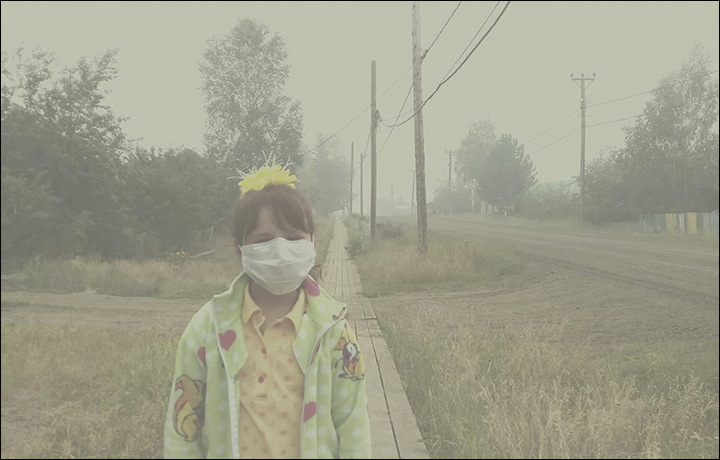
These scene is from Vanavara village in the Evenki district of Krasnoyarsk region. Picture: Black Kolibri
The worst-hit regions are Krasnoyarsk, Yakutia and Irkutsk in a summer fire season seen as worse than recent years in the spread and intensity of the infernos.
Some 784,931 hectares of wildfires are raging on permafrost zones including the Arctic in Yakutia - officially Sakha Republic - and the Khanty-Mansi autonomous region, causing possibly irreparable damage to the tundra.
Other infernos are sweeping through boreal forests which are known as the lungs of the Northern Hemisphere.
]
Here, centuries-old cedar, pine and larch trees are turned to ashes.
In many - indeed most - areas the authorities acknowledge they will not be able to extinguish the fires because the areas are too remote or do not threaten people or strategic facilities.
The cost of putting them out is seen as too great.
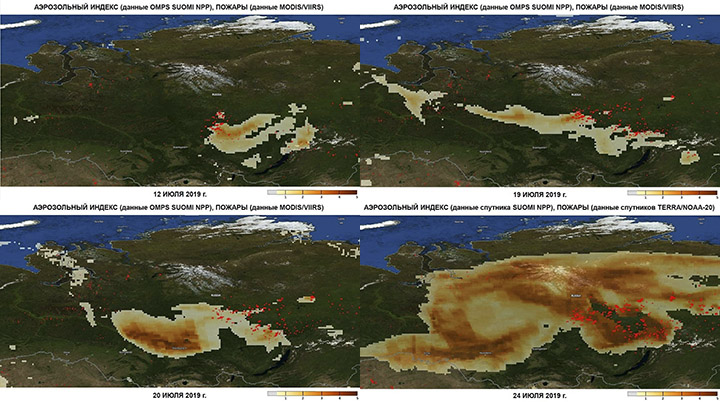
The scientists of the Center for Remote Sensing of the Earth of the Krasnoyarsk Scientific Center have shown how fires developed and smoke plumes spread over the territory of Siberia over the past two weeks. Pictures: @krasnoyarsk.science
Eventually rain and snow will do the job, yet there is concern at the pollution pumped into the atmosphere and the loss of vast forest tracts.
The latest data for 25 July on wildfires shows:
1. Krasnoyarsk region - 906,344 hectares burning, of which 24,178 ha will be extinguished
2. Yakutia (Sakha Republic) - 784,909 hectares, with 865 ha to be extinguished.
3. Irkutsk region - 499,443 hectares, with 120,262 ha due to be extinguished.
4. Buryatia - 45,097 hectares, with 992 ha to be extinguished.
5. Khanty-Mansi Autonomous region - 22 hectares, all to be extinguished
6. Transbaikal region - 17 hectares, with 1 ha to be extinguished
7. Tyumen region - 1 hectare which is due to be extinguished.
The area on fire - according to official statistics - is 2.24 million hectares, larger
than the country of Wales.
Smoke is reaching both Novosibirsk and Ekaterinburg, Russian’s third and fourth
cities by population.
Novosibirsk along with Tomsk and Kemerovo are covered with the smoke for the
fifth day in succession. In the later part of this week, the situation worsened.
Cardiologist at Novosibirsk City Hospital No. 1, Irina Pankova, said the number of people complaining of headaches, high blood pressure and problems with breathing, has significantly risen.
In Krasnoyarsk city, also hit by smoke, the situation is much worse.
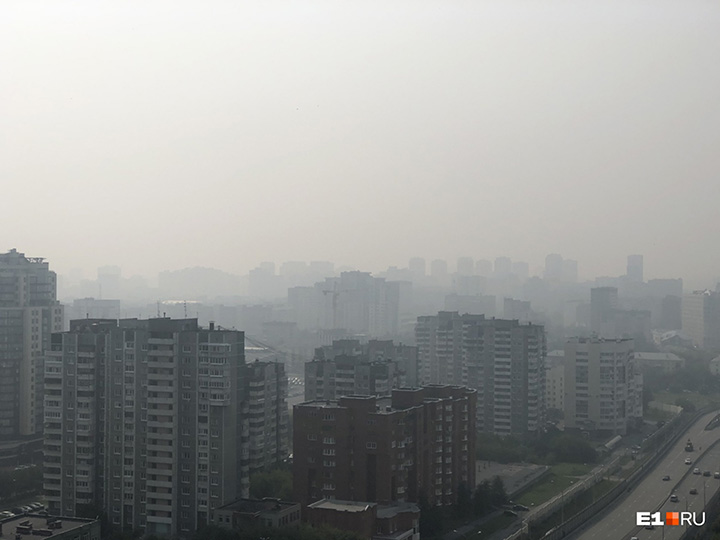
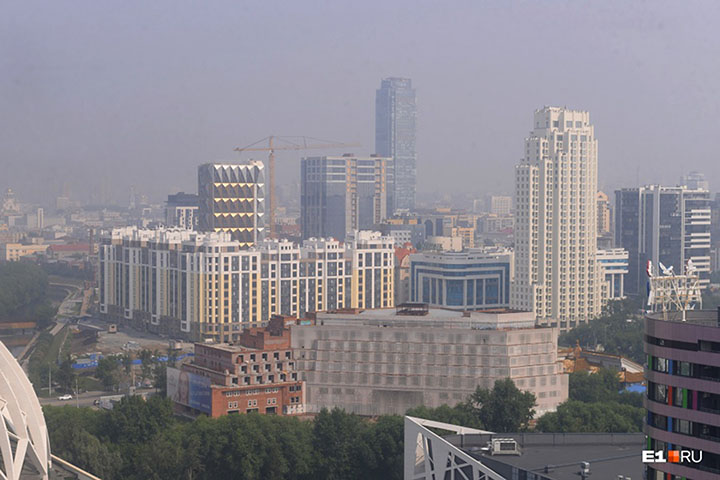
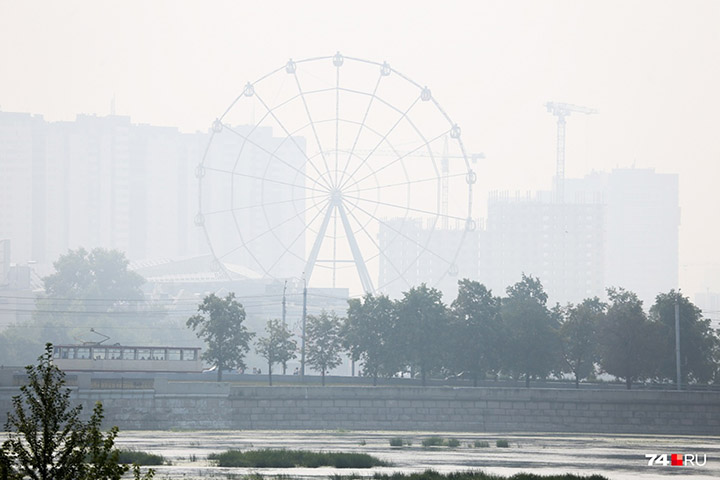
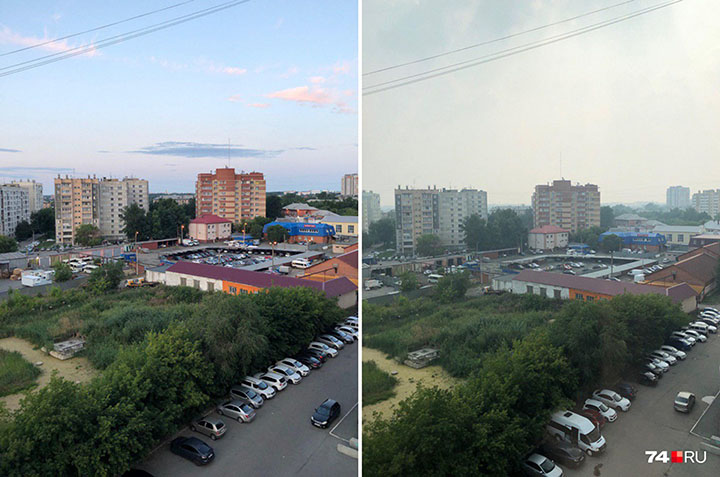
Yekaterinburg and Chelyabinsk covered in smoke on July 24.
But here local meteorologists refused to introduce what is known as the mode of unfavourable nature conditions.
They say that the pollution are not high enough to exceed the norm and complain
that the meteorologists from the other cities covered with the smoke, who decided to introduce the mode, acted illegally.
If the mode is introduced, factories must reduce the emissions.
Regional governor Alexander Uss demanded a voluntarily reduction by factories
since ‘we all live in the same city and breathe with the same smoke'.
Locals staged a protest action where they were walking in respirators, calling for
the mode to be introduced.
A petition was charted on change.org demanding the introduction off an emergency mode across all Siberia.
It had gathered more than 100,000 signatures.
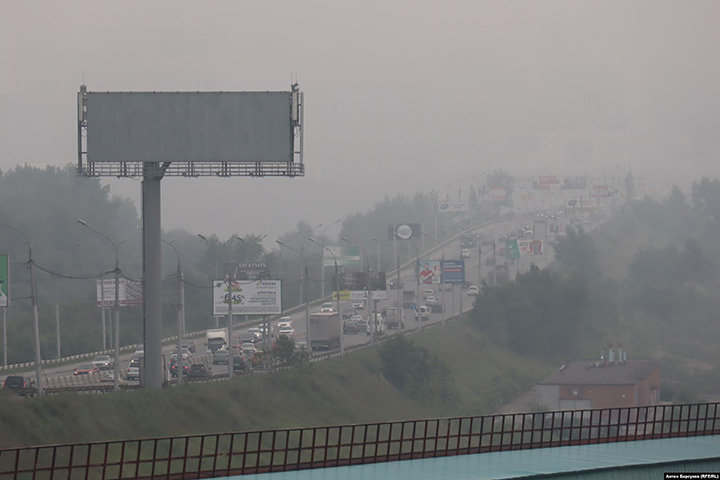
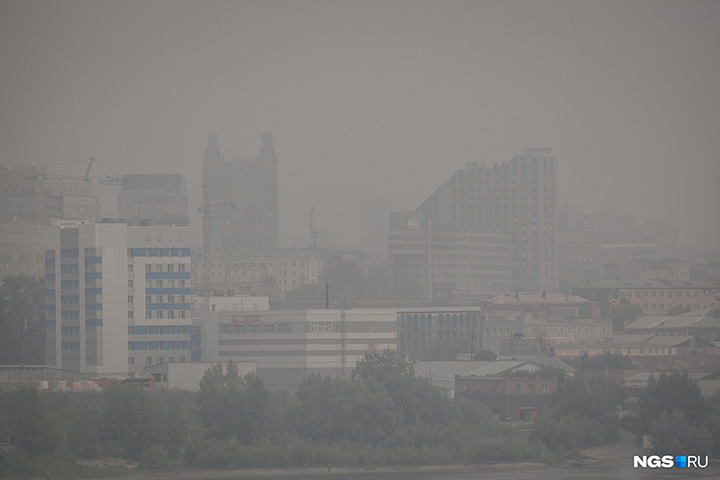
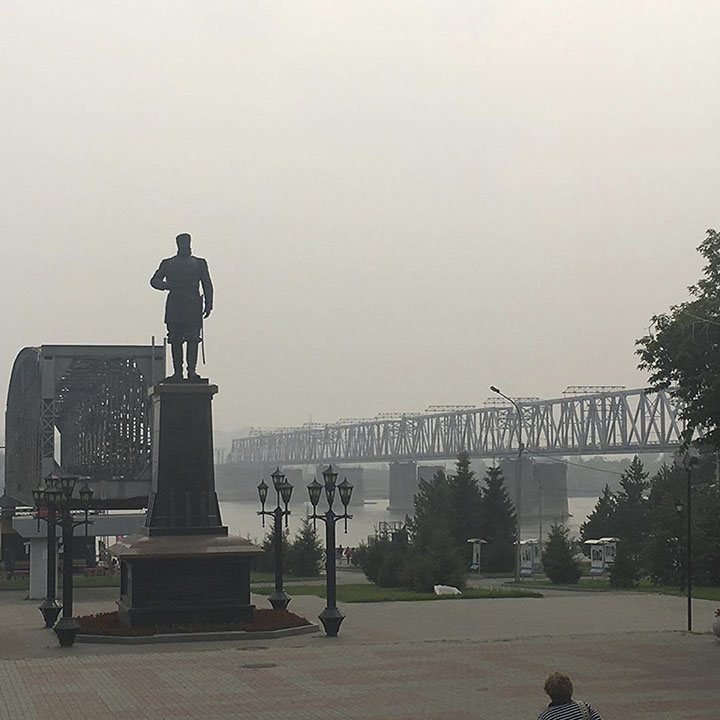
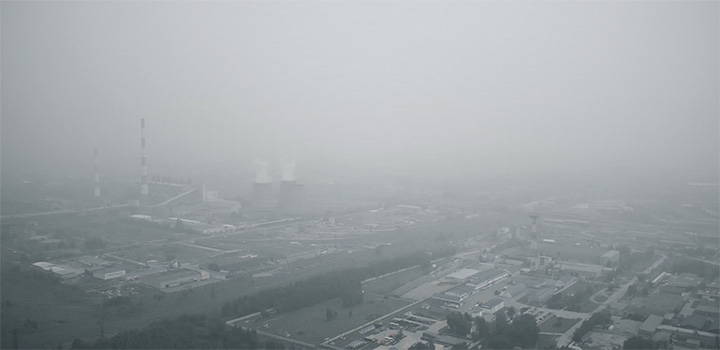

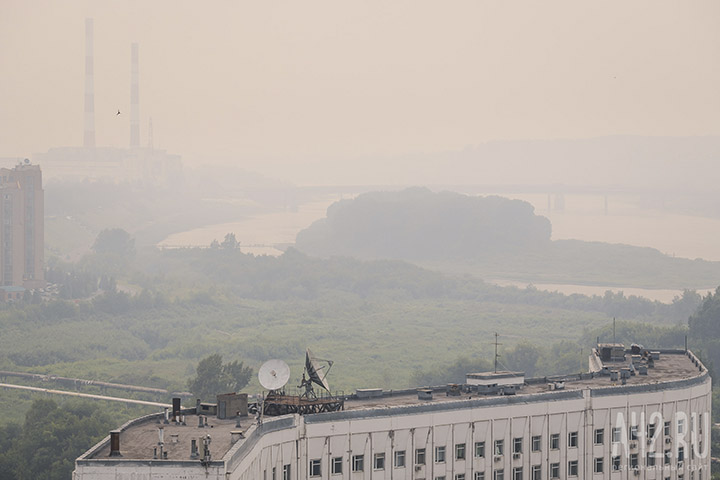
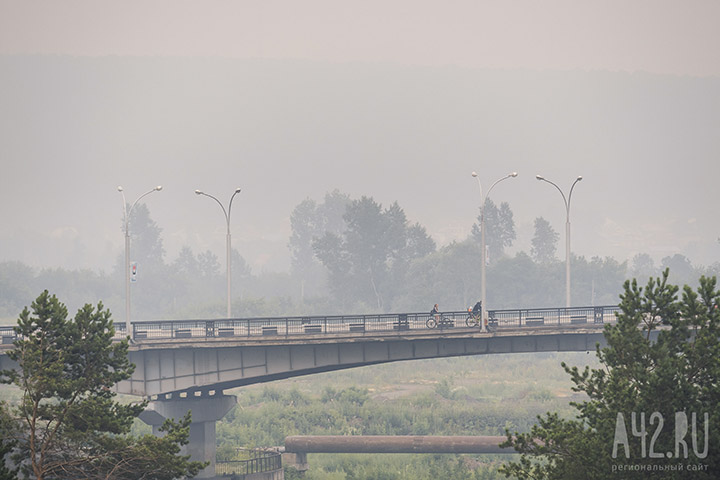
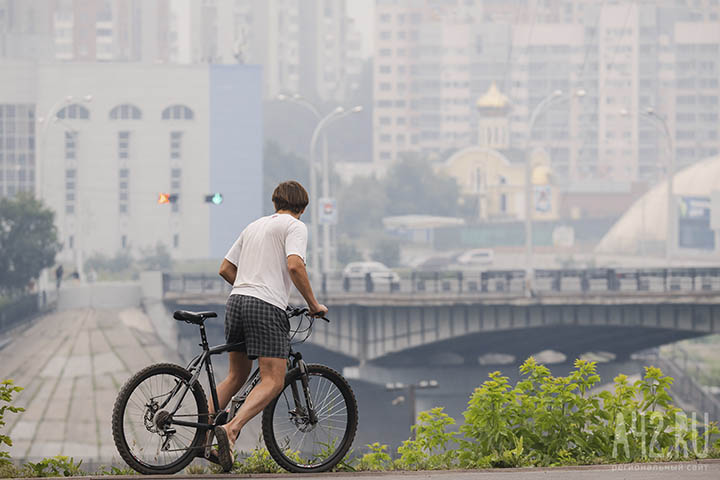
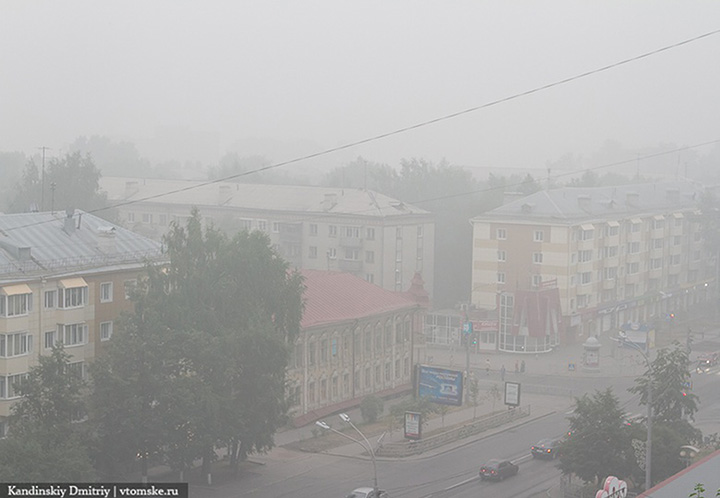
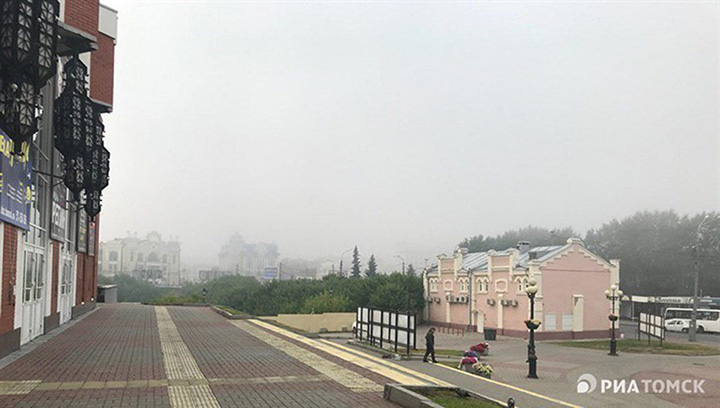
People who live in vicinity of the wildfires have shared their desperate accounts.
A resident of Tura, a settlement in the Evenkiysky district, in the north of
Krasnoyarsk region, told how in neighbouring Baikit village a bear suddenly ran
out of the burning folliage.
Only one man in the entire village has a license [to shoot the bear].
On the banks of the Tura River bears are taking refuge on an island in the river.
Planes cannot fly in many outlying areas because of the smoke haze.
‘Smog has been here for two weeks already,’ said Olga. ‘People walk in masks,
choking.
‘In the house you can not breathe - you open the door or window, and everything
goes in the house.
‘We have no air conditioners in the houses, because the village is so small.'
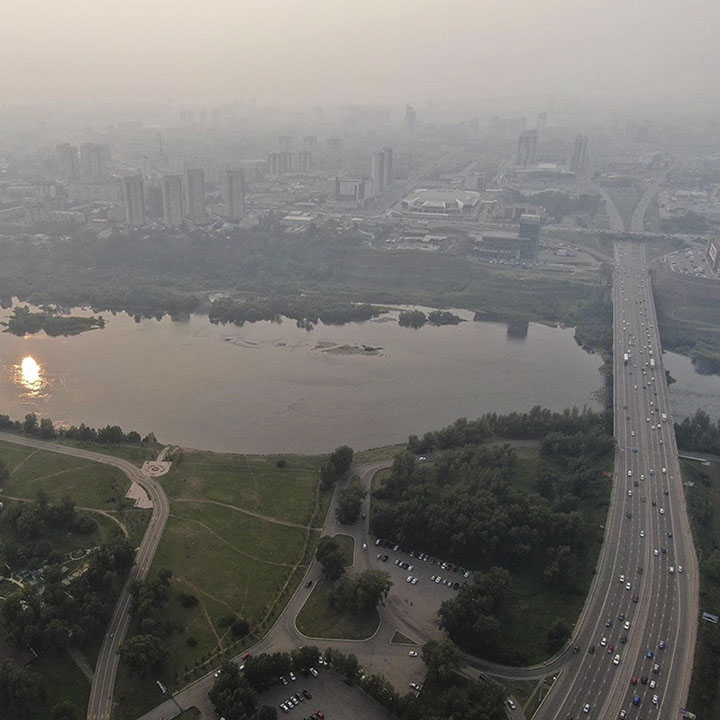
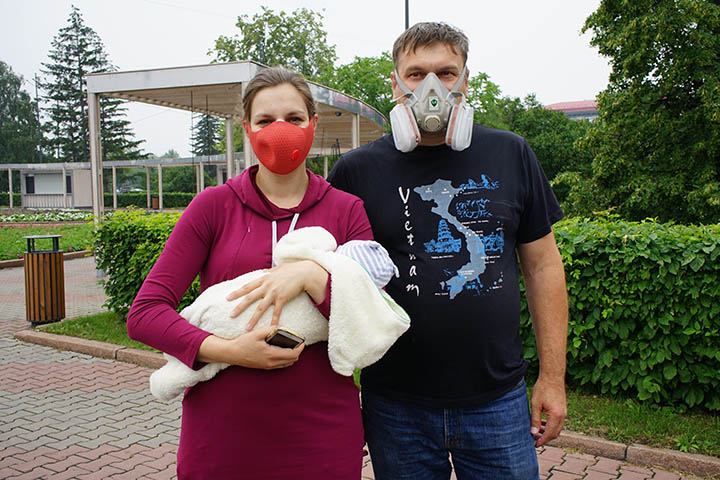
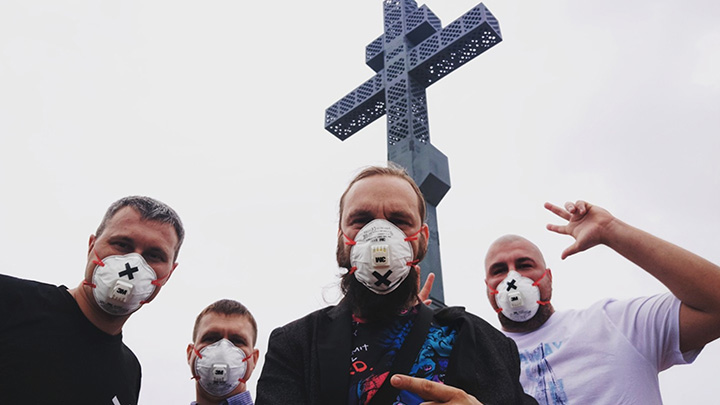
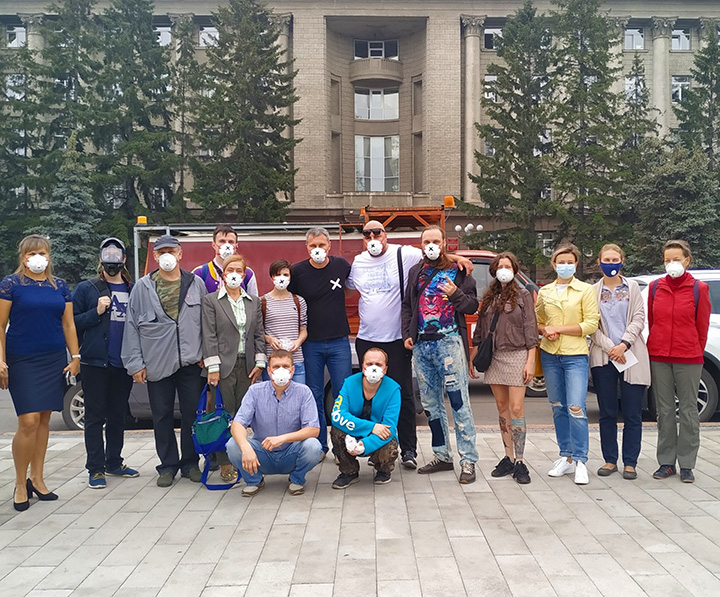

Locals staged a protest action in Krasnoyarsk where they were walking in respirators, calling for the mode to be introduced. Pictures: copter24, Nebo.Live
Another Tura resident Tatiana said: ‘It is impossible to breathe.
‘Fires are not very close, but the wind carries everything here. It smells a lot.’
An emotive post from a Krasnoyarsk resident nicknamed Black Kolibri shows a
photo of a seven year old girl in thick smog wearing a face mask.
These scene is from Vanavara village in the Evenki district of Krasnoyarsk region.
The writer feels people are getting no support in the battle against wildfires.
‘In the village there are 1,000 more children,’ read the post.
‘The same number of old men…. People, children, old people have been breathing this for several weeks already.
‘I ask, all who reads this, distribute it, let everyone know how they poison people,
while fat men stuff their pockets.
'Fires are not extinguished. The taiga burns around the village, the nearest fire is
15km from Vanavara.
‘At the same time, residents are told that there is no danger for them.
‘If the fire gets to Sobinsky pier, which is one kilometre away, the village will simply be demolished.'
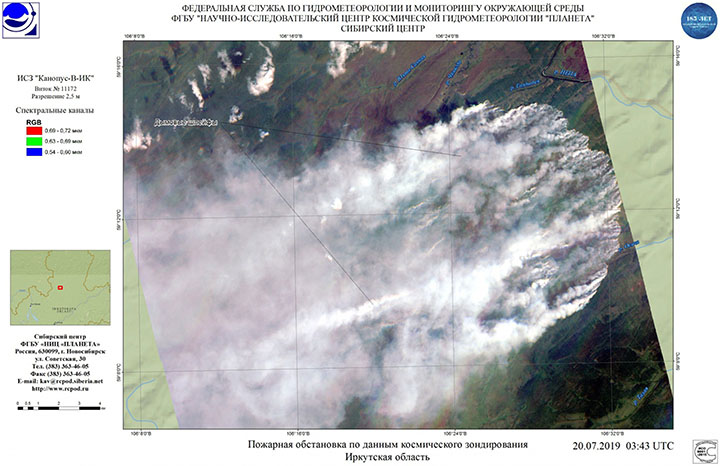
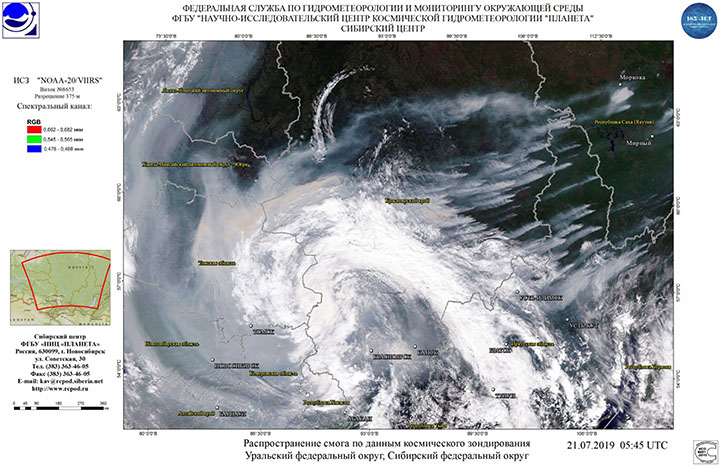
Satellite images show how the smoke from the wildfires spreads in Irkutsk (top) and Krasnoyarsk (bottom) region. Pictures: Krasnoyarsk Scientific Centre 'Planeta'.
Wildfires in Russia’s Irkutsk region swelled by 66,700 hectares in the past 24 hours, reaching 558,300 hectares, the regional government said in a statement on Friday.
'As of July 26, four wildfires engulfing 1,445 hectares have been contained," the statement reads. According to the regional government, 68 wildfires are still active, scorching 23,225 hectares, 54 wildfires scorching 102,314 hectares are burning in controlled areas.
Another 46 wildfires engulfing 431,300 hectares have been recorded in
hard-to-reach area, where firefighting activities are pointless. Three blazes
affecting 1,810 hectares were extinguished in the region in the past 24 hours.
According to the regional department of meteorology and environmental monitoring, on July 26-27, fire risks will remain high in the areas engulfed by wildfires.
Worst-hit from from smog in Irkutsk region are Bratsk, Ust-Kut, Ust-Ilimsk, Zheleznogorsk-Ilimsky and Tulun. Tulun was devastated by recent flooding.
Ekaterina Rodionova, a resident of Ust-Kut, posted: 'While in the south of the region they continue to eliminate the consequences of the flood, in the north people are suffocating from the smoke.
‘Such a smoke we have not seen since 2016. Even healthy people feel unwell.
‘I have a headache and nausea in the morning, and I am afraid even to imagine what hypertensives and asthmatics feel.
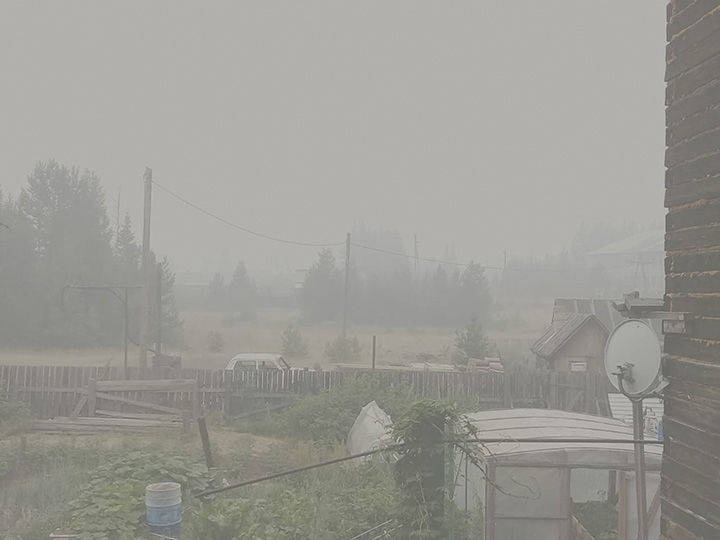


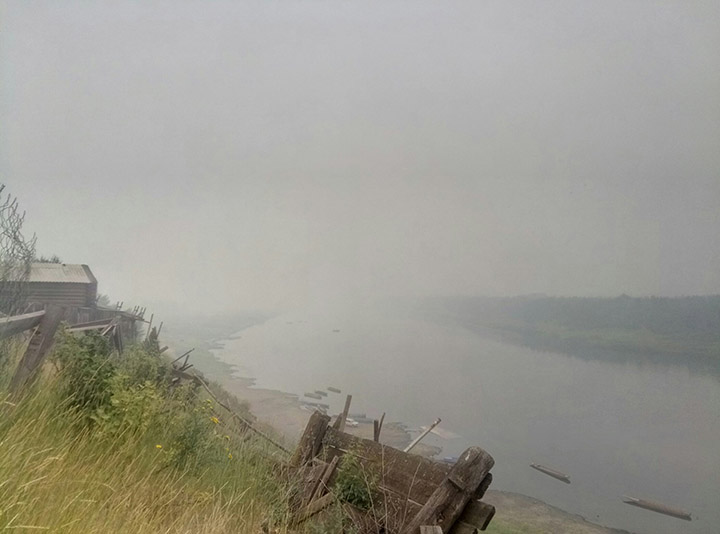
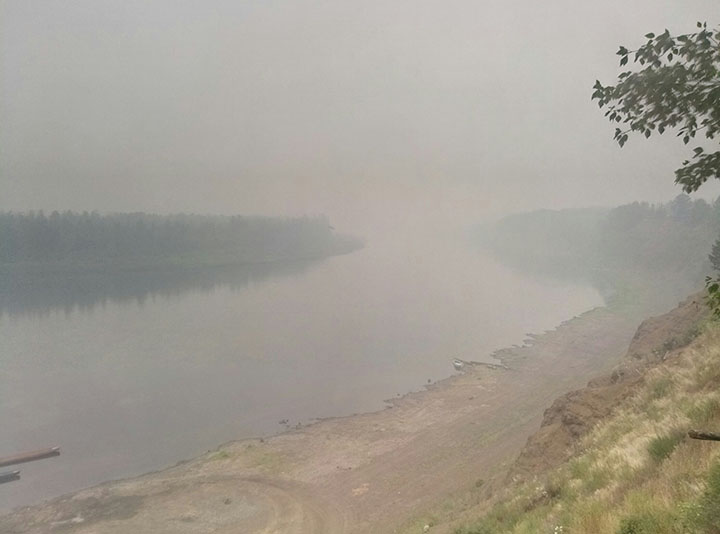
'Fires are not extinguished. The taiga burns around the village, the nearest fire is 15km from Vanavara.' Black Kolibri, The Siberian Times
Since July 22, all flights have been canceled in Kirensk town.
The reason was heavy smoke due to forest fires. Currently, the visibility is about
100 metres.
The date of the resumption of flights is still unknown. Shipping on Lena River in
Irkutsk region has been stopped.
Residents of Zheleznogorsk-Ilimsky report in social networks:
'In the maternity hospital, the little ones are in oxygen masks, there is nothing to
breathe, this is the forgotten area, no one cares.’
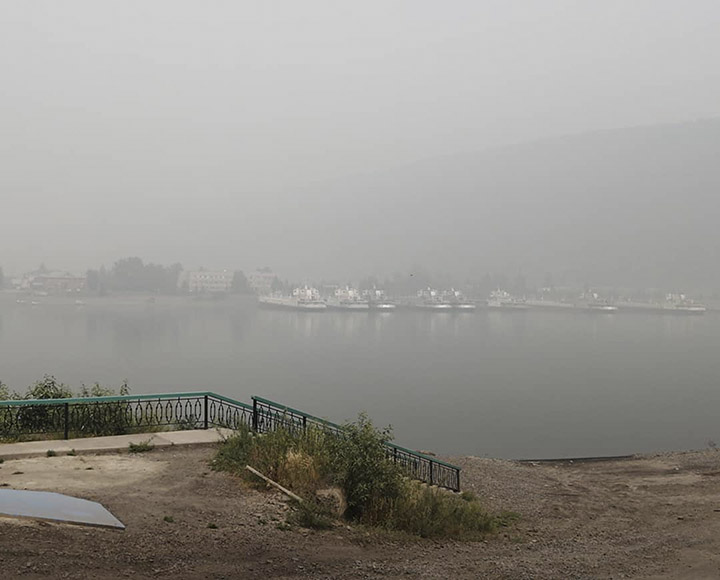
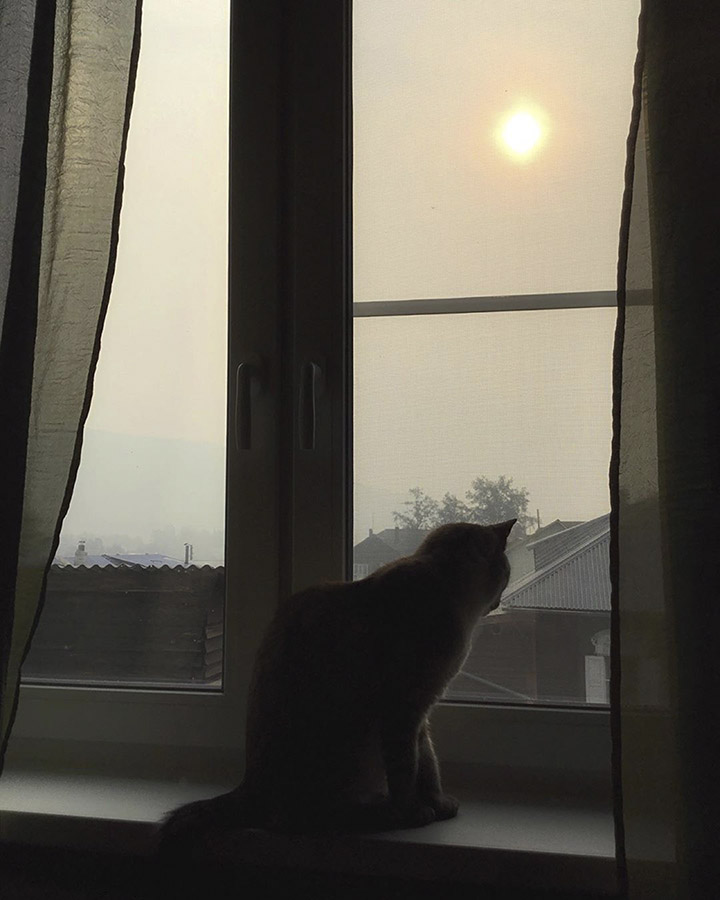
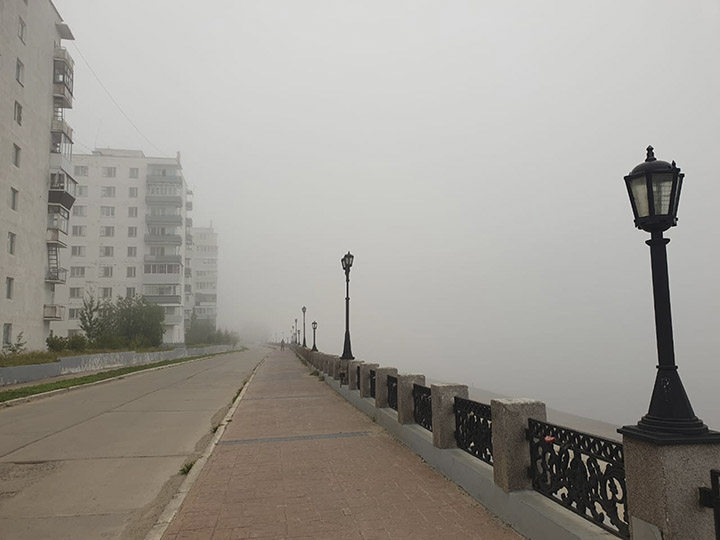
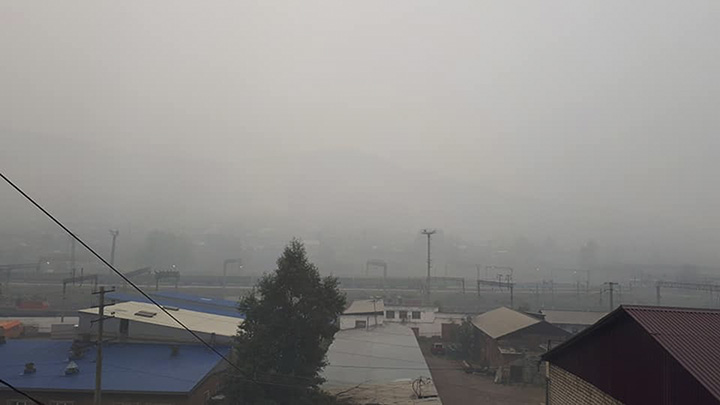
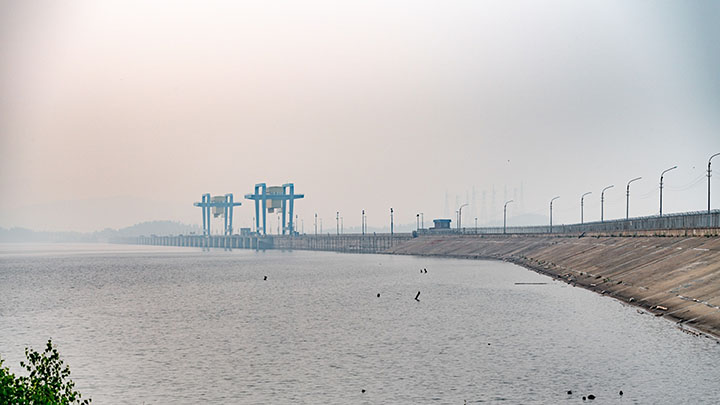
Kirensk, Ust-Kut and Ust-Ilimsk towns to Irkutsk region.
Pavel Garin, head of the main directorate of the Emergencies Ministry in Yakutia reported: 'The wildfire situation in the Aldan, Verkhoyansk, Zhigansk, Lensky,
Nyurbinsky and Suntarsky districts remains very difficult.
'The situation is aggravated by the lack of precipitation, dry and windy weather.
There are no threats to settlements from natural fires. We keep the situation under constant control.'
In Verkhoyansk, a specially adapted Mi-8 helicopter has made 132 flights dropping 456 tons of water on fires.
Flights from regional capital Yakutsk to the area have been grounded.
Smoke over Ust-Ilimsk town, Irkutsk region.
Wildfire rages close to Dulgalakh village in Yakutia.
In Krasnoyarsk region the Forestry Ministry made clear that fires in remote districts would not be extinguished.
A spokesman said: ‘For the most part, we take the decision on non-extinguishing, since there are no threats to human settlements, nor objects of the economy’.
The costs of putting out such fires could be ‘ten times more than the possible damage’.
The problems of tackling remote fires was also highlighted in Irkutsk region.
Alexander Agafonov, an advisor to Rosleskhoz, said: ‘Look, the nearest base is 500 km from the fire in the taiga.’
A plane ’back and forth, drops a small amount of water. We will be ruined if we use aviation for such purposes.’
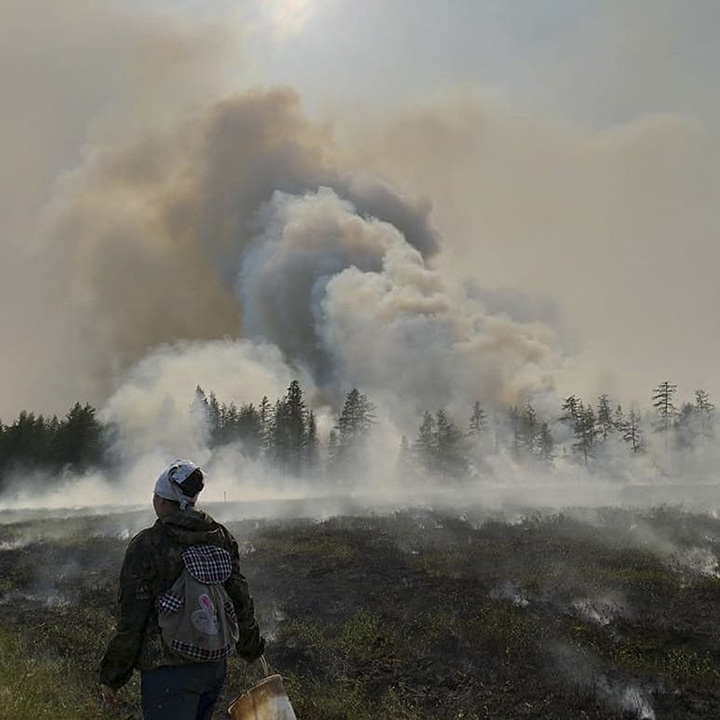
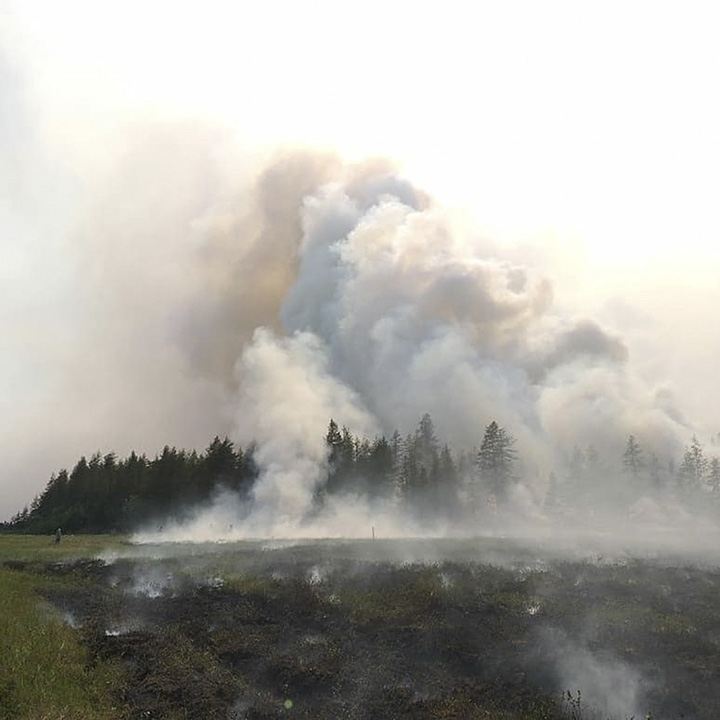

Wilfires raging in Verkhoyansk district, Yakutia.
Such a policy has been permitted for four years but remains controversial because it allows the burning of forests for weeks at a time with no intervention, and the loss
of swathes of timber resources.
The head of the Situation Centre of Federal Service for Hydrometeorology and Environmental Monitoring (Rosgidromet), Anatoly Tsygankov, said the fire danger remains acute in the north of Irkutsk region and south of Yakutia up to 28 July.
Officially the cause of fires is scorching 30C temperatures, strong winds, and heat lightning.
Meanwhile, Russia’s federal Natural Resources Ministry wrote that the wildfires in
the Krasnoyarsk region were caused by a combination of human actions (35.8%
of all cases), flames spreading from other regions (34.4%), and lightning (25.4%).



No comments:
Post a Comment
Note: only a member of this blog may post a comment.